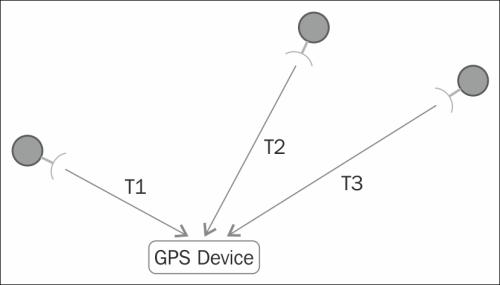Unpack your GPS device; it is time to get started.
Before we get started, let me first give you a brief tutorial on GPS. GPS, which stands for Global Positioning System, is a system of satellites that transmits signals. GPS devices use these signals to calculate a position. There are a total of 24 satellites transmitting signals all around the earth at any given moment, but your device can only see the signal from a much smaller set of satellites.
Each of these satellites transmits a very accurate time signal that your device can receive and interpret. It receives the time signal from each of these satellites, and then based on the delay, the time it takes the signal to reach the device, it calculates the receiver's position based on a procedure called triangulation. The following two diagrams illustrate how the device uses the delay differences from three satellites to calculate its position:

The GPS device is able to detect...



